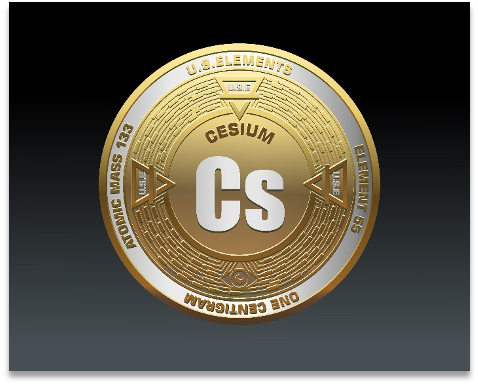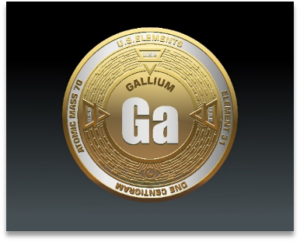Cesium, the eighth critical mineral in our series, is best known for its role in atomic clocks, which are so precise they measure time to within a few billionths of a second. However, beyond its contribution to timekeeping, cesium is an indispensable element in a range of high-tech applications, from telecommunications to space exploration. Despite its importance, the U.S. remains entirely dependent on imports, a vulnerability we can no longer afford.
Why the U.S. Needs Cesium
Cesium’s primary application is in atomic clocks, which serve as the backbone of GPS systems and global communications networks. Beyond timekeeping, cesium is used in:
- Petroleum Exploration: Cesium formate brines are crucial in high-pressure oil and gas drilling.
- Medical and Industrial Uses: Cesium compounds are used in radiation therapy for cancer treatment and as catalysts in chemical manufacturing.
- Defense and Aerospace: Cesium-ion propulsion systems are being developed for spacecraft, offering efficient, long-duration thrust.
Where It’s Found Domestically
Unlike many other critical minerals, cesium is exceptionally rare. The world’s primary commercial sources are pegmatite deposits, with the largest being the Tanco Mine in Canada. The U.S. does not currently have any active cesium mines, but known deposits exist in states such as Maine and South Dakota. Developing these resources is essential for reducing our reliance on foreign suppliers.
Economic Realities
With no domestic production, the U.S. is completely dependent on imports, primarily from Canada and China. Prices for cesium compounds can vary significantly due to their specialized applications and limited supply. Developing a secure U.S. supply chain will require strategic investment in exploration and refining technologies.
Processing and Technological Innovations
Extracting cesium is complex due to its rarity and the difficulty of separating it from other alkali metals. Traditional methods involve acid leaching and fractional crystallization, but emerging technologies, such as ion-exchange processes, could improve efficiency. Investing in these innovations will be critical for developing a domestic cesium supply.
Abundance and Waste Recovery Potential
Cesium is one of the rarest naturally occurring elements in the Earth’s crust, with an average concentration of about 3 parts per million. Given its scarcity, alternative recovery methods are limited. However, some industrial processes and mining waste streams could offer secondary sources if properly developed.
Time to Market
From discovery to full-scale production, cesium mining and refining can take over a decade. With no active domestic production, the U.S. must act now to explore known deposits and develop refining capabilities to ensure a stable supply in the future.
Current and Future Applications
While cesium’s current uses in timekeeping, energy exploration, and medical applications are well established, future breakthroughs could further enhance its value. Cesium-based quantum computing technologies and next-generation ion propulsion systems are areas of growing research and investment.
Impact on Everyday Life
Every time you check your GPS or use a smartphone, cesium atomic clocks are working behind the scenes to provide precise timing. This element plays a crucial, though invisible, role in modern life, ensuring the accuracy of navigation, financial transactions, and global communications.
Consequences of Supply Shortages
Without a reliable cesium supply, critical industries including defense, telecommunications, and space exploration face major risks. A supply disruption could hinder GPS accuracy, slow oil and gas exploration, and impact advanced scientific research.
Import Dependence
The U.S. currently imports 100% of its cesium supply, relying on Canada and China. With rising geopolitical tensions and increasing demand, securing a domestic source is imperative to prevent supply chain disruptions.
Conclusion: The Path to Cesium Independence
Cesium is a vital yet overlooked mineral that plays an irreplaceable role in modern technology. With no domestic production, the U.S. must take immediate action to explore, mine, and refine its own cesium resources. Strategic investments and policy support can ensure that America remains at the forefront of innovation while securing our technological future.
Stay tuned for the next article in our Critical Minerals Series, where we continue our journey toward making America mineral independent again.






